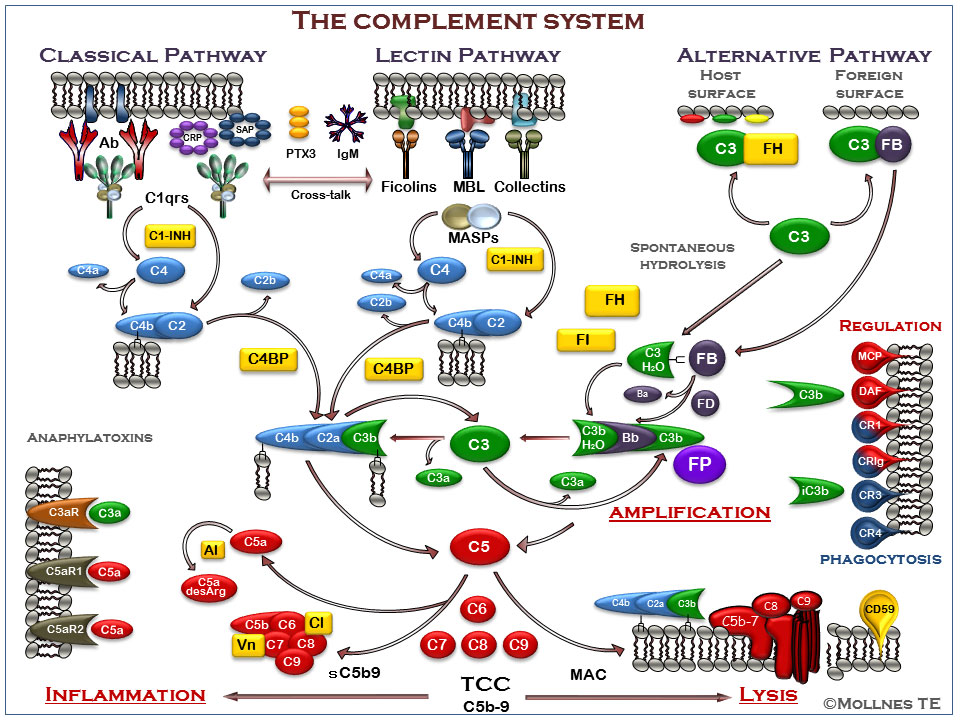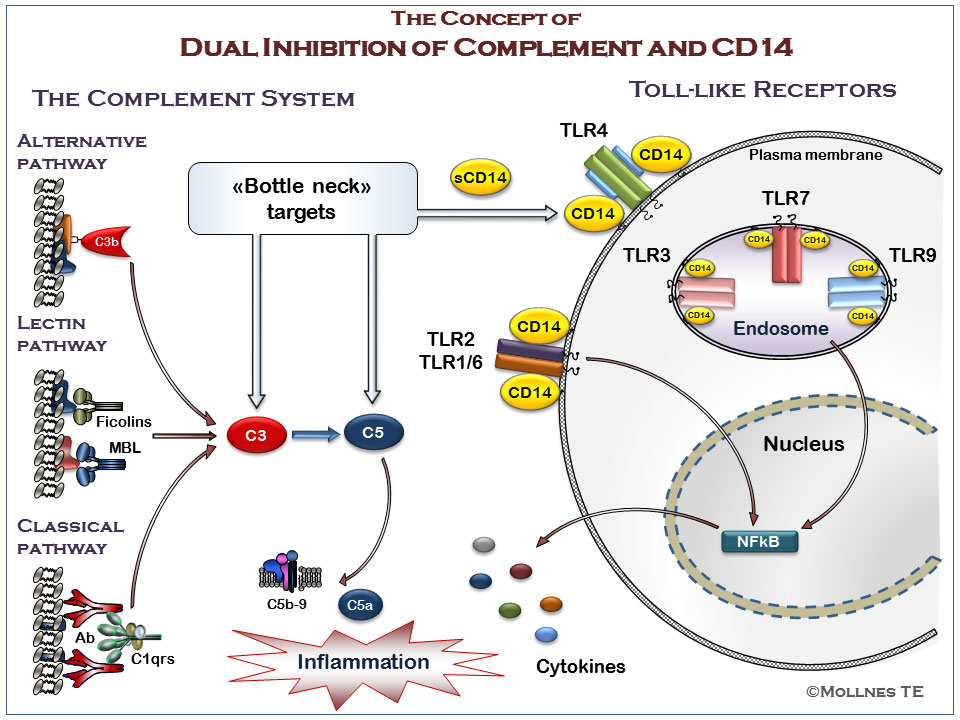Tom Eirik Mollnes' group Complement Research Group

Group leader
Complement is part of the innate immune system protecting the host against invading micro-organisms. Regulatory control mechanisms normally prevent the system from extensive and systemic activation, thereby protecting the host from self-damage. Under various disease conditions complement is improperly activated, either locally leading to tissue damage or systemically with risk of serious homeostatic disturbances.
A primary research goal for the Complement Research Group is to elucidate the role of complement as a primary inducer of the inflammatory reaction and thereby form a basis for a future therapeutic approach in complement-mediated disease processes. In particular, the crosstalk between complement and the co-receptor CD14 of the Toll-like receptor (TLR) family is in focus.
Link to official home page for "The Norwegian Complement Research Group" - https://ncrg.no/
We do research on the role of complement in human disease.
About complement
Complement is part of the innate immune system protecting the host against invading micro-organisms. Regulatory control mechanisms normally prevent the system from extensive and systemic activation, thereby protecting the host from self damage. Under various disease conditions complement is improperly activated, either locally leading to tissue damage or systemically with risk of serious homeostatic disturbances.
Research goals
A primary research goal for the Complement Research Group is to elucidate the role of complement as a primary inducer of the inflammatory reaction and thereby form a basis for a future therapeutic approach in complement-mediated disease processes.
For this purpose we have developed assays for detection and quantification of complement activation products based on monoclonal antibodies to activation dependent epitopes on a number of complement components; the most important one being the assay for TCC (the soluble terminal complement complex, sC5b-9). These assays are used to detect complement activation experimentally and clinically and to evaluate the effect of various complement inhibitors in experimental models. In a human whole blood model, developed in our laboratory, where all potential inflammatory mediators are able to interact mutually, we are currently studying the effect of complement inhibition on a number of arms of the inflammatory network.
Current experimental in vitro and animal protocols, as well as clinical studies, focus on inflammatory diseases with emphasize on infection, sepsis and inflammatory response syndrome, ischemia-reperfusion injury, transplant rejection and biocompatibility of medical devices. Based on the cross-talk between complement and the Toll-like receptor system, the group has put forward a hypothesis of combined inhibition of complement and CD14 as a therapeutic approach to attenuate the inflammatory reaction induced by danger signaling both from external (PAMPs) and internal (DAMPs) ligands.
Visit the Mollnes group home page at UiO for more information.


